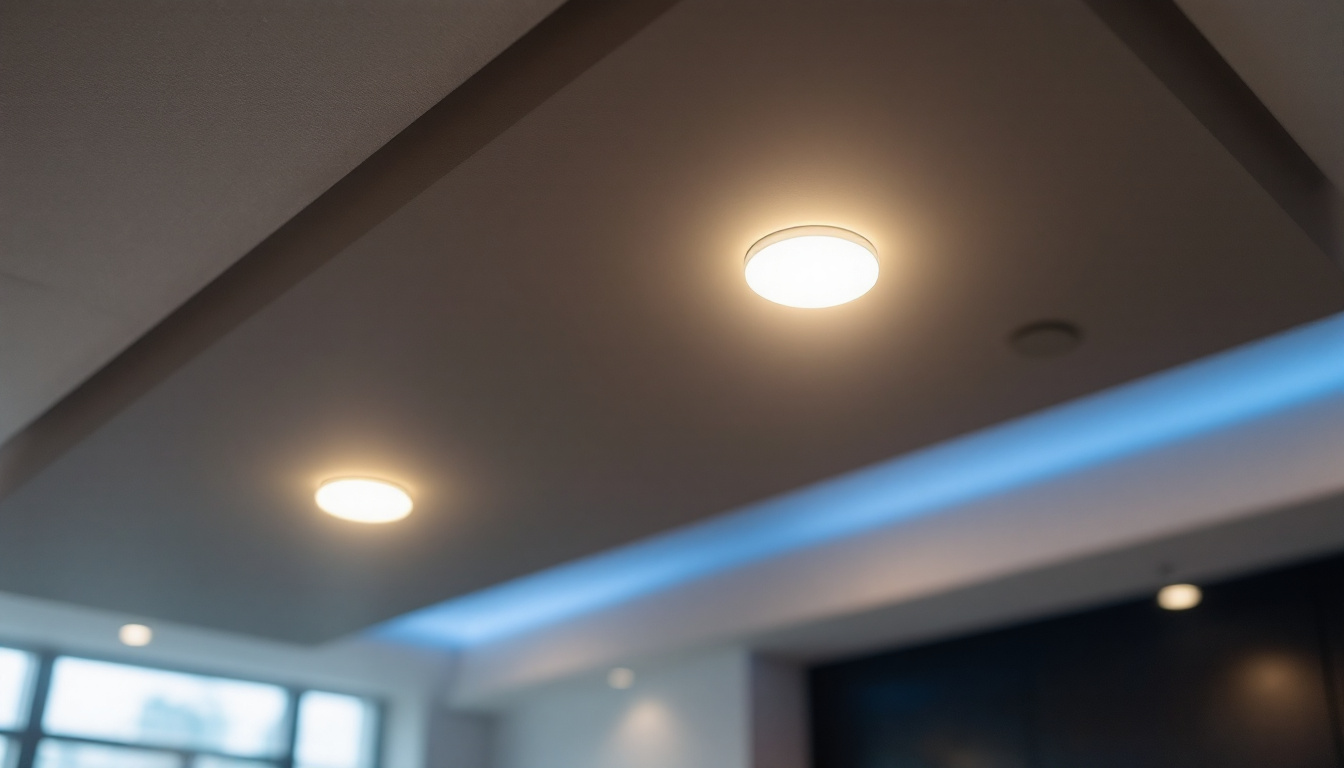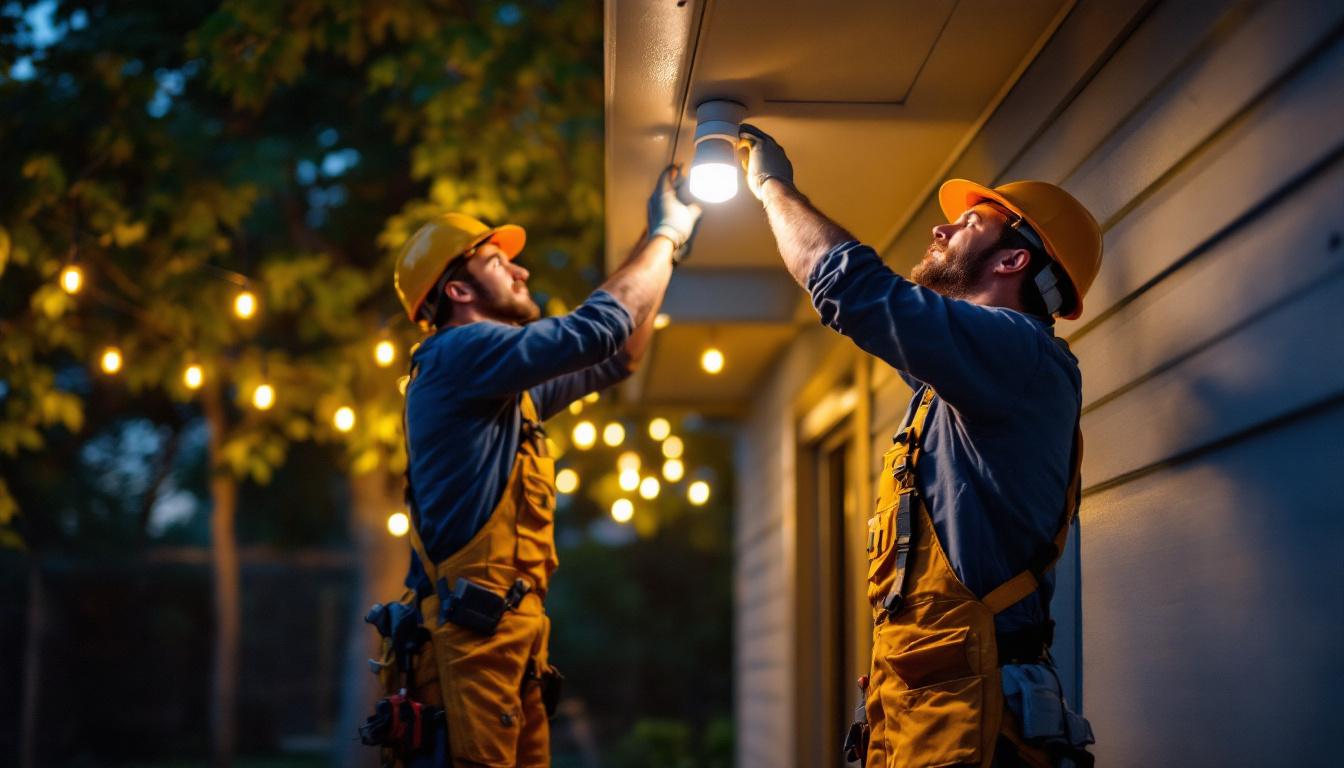
recessed lighting has become a popular choice for modern spaces, offering a sleek and unobtrusive way to illuminate areas without compromising aesthetics. For lighting contractors, understanding how to effectively install recessed lights in T-bar ceilings is essential. This article will delve into the intricacies of recessed lighting in T-bar ceilings, covering installation techniques, design considerations, and troubleshooting tips.
T-bar ceilings, often referred to as drop ceilings, are a common feature in commercial spaces, schools, and offices. They consist of a grid framework that supports lightweight ceiling tiles. This type of ceiling allows for easy access to plumbing, electrical wiring, and HVAC systems, making it a practical choice for many applications. Additionally, T-bar ceilings can also help with sound insulation, as the tiles can absorb sound and reduce noise levels, which is particularly beneficial in busy environments like classrooms and open office spaces.
To effectively work with recessed lighting in T-bar ceilings, it’s important to understand the components involved. The main elements include:
Each component plays a crucial role in the overall functionality and aesthetics of the ceiling. Understanding how these elements interact will help contractors make informed decisions during installation. For instance, the choice of ceiling tiles can significantly affect both the acoustic properties and the thermal efficiency of the space, as some materials are better suited for sound absorption while others may offer superior insulation.
Recessed lighting offers several advantages when installed in T-bar ceilings:
These benefits make recessed lighting an ideal choice for many contractors looking to enhance the functionality and appearance of a space. Moreover, the ability to direct light in specific areas allows for creative lighting design, which can highlight architectural features or artwork, adding a unique character to the environment. The energy efficiency of modern LED recessed lights also contributes to lower energy costs, making them an environmentally friendly option that aligns with sustainable building practices.
Installing recessed lights in T-bar ceilings requires careful planning and execution. Here are key steps and considerations for a successful installation:
Before installation begins, a well-thought-out layout is essential. Consider the following:
Creating a detailed plan will help streamline the installation process and ensure optimal lighting coverage. Additionally, consider the use of lighting controls, such as dimmers or smart home systems, which can enhance flexibility and energy efficiency. By integrating these controls into your design, you can easily adjust the ambiance to suit various activities, from hosting meetings to relaxing after a long day.
Selecting the appropriate recessed light fixtures is critical. Factors to consider include:
Choosing the right fixtures will enhance the overall effectiveness of the lighting design. Moreover, it’s beneficial to explore fixtures with adjustable features, such as tilt or rotation, which can provide targeted lighting for artwork or architectural details. This flexibility not only adds depth to the lighting scheme but also allows for a more dynamic visual experience in the space.
Once the planning and selection are complete, the installation can begin. Follow these steps for a successful installation:
Following these steps will help ensure a smooth installation process and a high-quality finished product. Additionally, consider the importance of proper insulation around the fixtures to prevent heat loss and maintain energy efficiency. Insulation can also help reduce noise from the ceiling, creating a more comfortable environment. Furthermore, if you are working in a commercial setting, adhering to local building codes and regulations is crucial to ensure safety and compliance throughout the installation process.
Designing a lighting layout for T-bar ceilings involves more than just placement and installation. Here are some key design considerations:
Effective lighting design often incorporates multiple layers of light, including ambient, task, and accent lighting. Recessed lights can serve all three purposes:
By combining these layers, contractors can create a well-balanced lighting scheme that enhances the functionality and aesthetics of the space.
The color temperature of the bulbs used in recessed fixtures can significantly impact the mood of a room. Here’s how to choose the right color temperature:
Choosing the right color temperature can help contractors create the desired ambiance for each specific application.
As energy efficiency becomes increasingly important, selecting LED recessed lights can contribute to sustainability goals. Here are some benefits:
Incorporating energy-efficient lighting solutions not only benefits the environment but can also be a selling point for clients.
Even with careful planning and execution, challenges may arise during the installation of recessed lights in T-bar ceilings. Here are some common issues and how to address them:
If the installed recessed lights do not provide adequate illumination, consider the following solutions:
Flickering can be a frustrating issue. Possible causes and solutions include:
Addressing these issues promptly can help maintain client satisfaction and ensure the longevity of the lighting installation.
Recessed lighting in T-bar ceilings offers a versatile and attractive solution for various spaces. By understanding the components, installation techniques, design considerations, and troubleshooting methods, lighting contractors can provide high-quality installations that meet client needs. As the demand for modern, energy-efficient lighting continues to grow, mastering recessed lighting in T-bar ceilings will be a valuable skill for any contractor in the field.
With careful planning and execution, recessed lights can transform a space, enhancing both functionality and aesthetics. By keeping up with the latest trends and technologies in lighting, contractors can ensure they remain competitive and deliver exceptional results to their clients.
Ready to elevate your lighting installations with the highest quality recessed lights for T-bar ceilings? Look no further than LumenWholesale. We provide contractors with spec-grade lighting products that meet the highest industry standards, all at unbeatable wholesale prices. Say goodbye to local distributor markups and hello to superior lighting products that enhance every project. With LumenWholesale, bulk buying is a breeze, thanks to our hassle-free process and free shipping. Don’t compromise on quality or value; visit Wholesale Lighting at the Best Value and experience the perfect blend of quality, affordability, and convenience for all your lighting needs.

Discover the answers to the most frequently asked questions by lighting contractors.

Discover how big light bulbs are revolutionizing the lighting industry with their innovative design, energy efficiency, and enhanced illumination.

Discover essential tips and expert advice for lighting contractors on installing ceiling mount motion sensor lights outdoors.

Discover the innovative strategies lighting contractors use to integrate T12 fluorescent bulbs into modern projects.